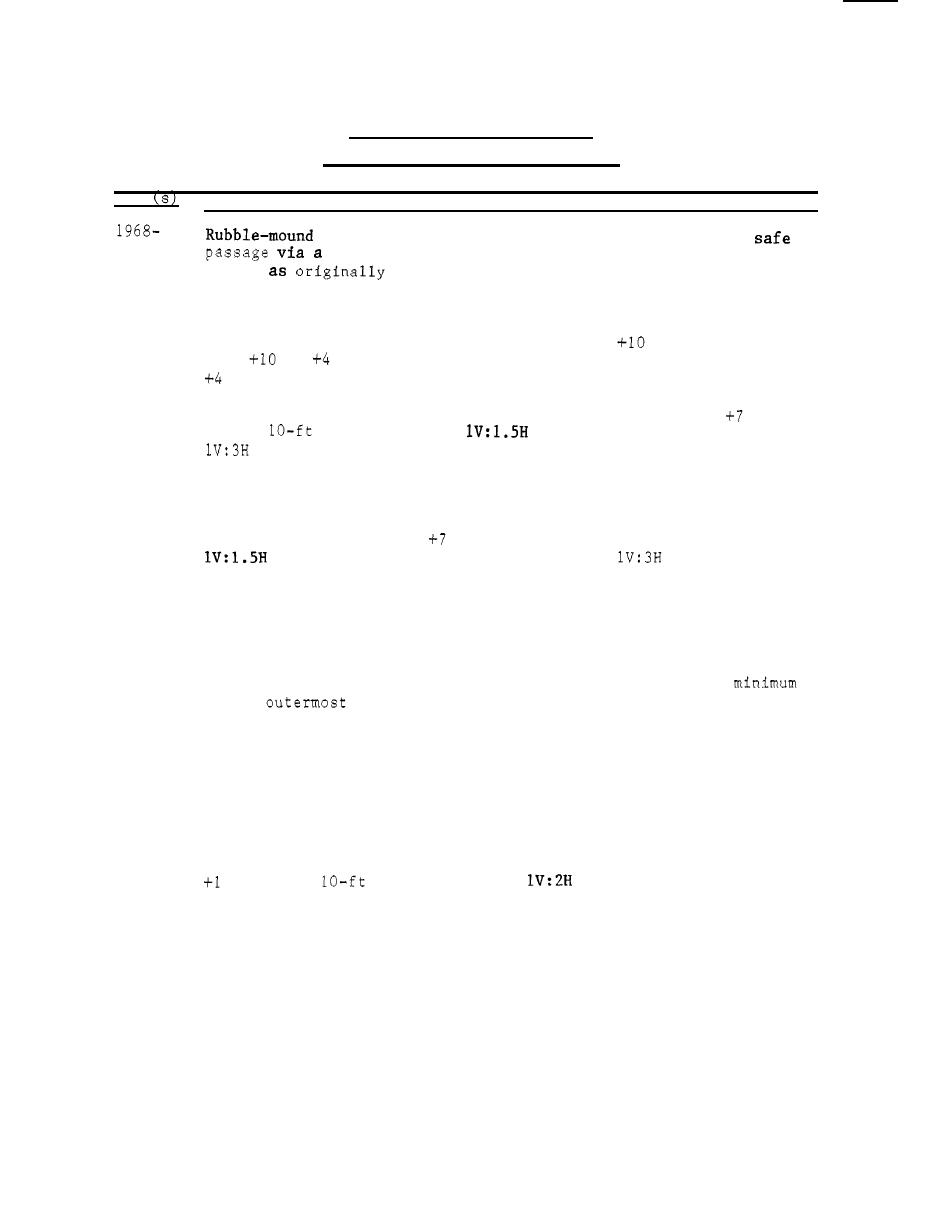
Table 16
Ponce de Leon Inlet Jetties
Ponce de Leon Inlet, Florida, SAJ
Date
Construction and Rehabilitation History
jetties (Figure 29) were constructed to provide
1972
15-ft-deep by 200-ft-wide dredged channel. The north
constructed, consisted of a landward concrete
jetty,
sheet-pile section 500 ft long, a 1,800-ft weir section consisting
of horizontal precast concrete beams placed between king piles, and
a 1,800-ft-long seaward rubble-mound section. The top elevation of
the sheet-pile section consisted of 235 ft at
ft mlw, and 265 ft
to
ft, mlw. The weir section consisted of 300 ft at
from
ft mlw and 1,500 ft at mlw. If needed, the elevation of the weir
section could be changed by addition or removal of the horizontal
beams. The rubble-mound section (Figure 29) was built to
ft mlw
crest width and
side slopes for 650 ft and
with a
side slopes on the seaward 1,150 ft. The cross section con-
sisted of a 2-ft foundation blanket (1- to 12-in. stone), 500- to
2,500-lb core stone, and one layer of 8- to 12-ton capstone (with
12-ton minimum on the outermost 50 ft of the structure). The south
jetty was a curved rubble-mound structure 4,080 ft long. The crest
ft mlw and 1 ft, respectively, with
0
elevation and width were
side slopes on the inner 3,500 ft and
on the outer
580 ft. A 2-ft-thick foundation blanket of 1- to 12-in. stone was
placed along the length of the south jetty with similar size stone
used as a core on the inner 2,215 ft (Figure 28) and covered with
1,000- to 2,000-lb capstone. An intermediate section, 235 ft long,
consisted of 500 to 2,500 core stone and 1,000- to 2,000-lb cap-
stone. The seaward section of the jetty consisted of 500- to
2,500-lb core stone and 8- to 12-ton capstone (with 12-ton
on the
50 ft of the structure). The landward side of the
south jetty (inner 3,200 ft) had a filter layer placed in the cap-
stone voids prior to backfilling of dredged material. In selecting
the capstone, design wave heights of 16 and 11 ft were used on sea-
ward and landward sections, respectively, in conjunction with
Hudson's equation. In 1972 the weir section was supplemented with a
rubble-mound section which was added because of concern for the wave
climate that the weir could receive over its design lifetime. The
design section consisted of a 2-ft-thick foundation blanket (1- to
12-in. stone) with 500- to 2,500-lb core and capstone placed to
ft mlw, a
crest width, and
side slopes. Total c o s t
of the jetties was ,145,000.
A blanket of armor stone was placed at the base of the north jetty
1978
along the seaward 2,550 ft. A total of 23,100 tons of up to 700-lb
riprap stone and 9,100 tons of 500-lb to 3-ton stone (75 percent
greater than 1 ton) was placed. The cost of the repair was
||content||
,453,000.
(Continued)
52



 Previous Page
Previous Page
